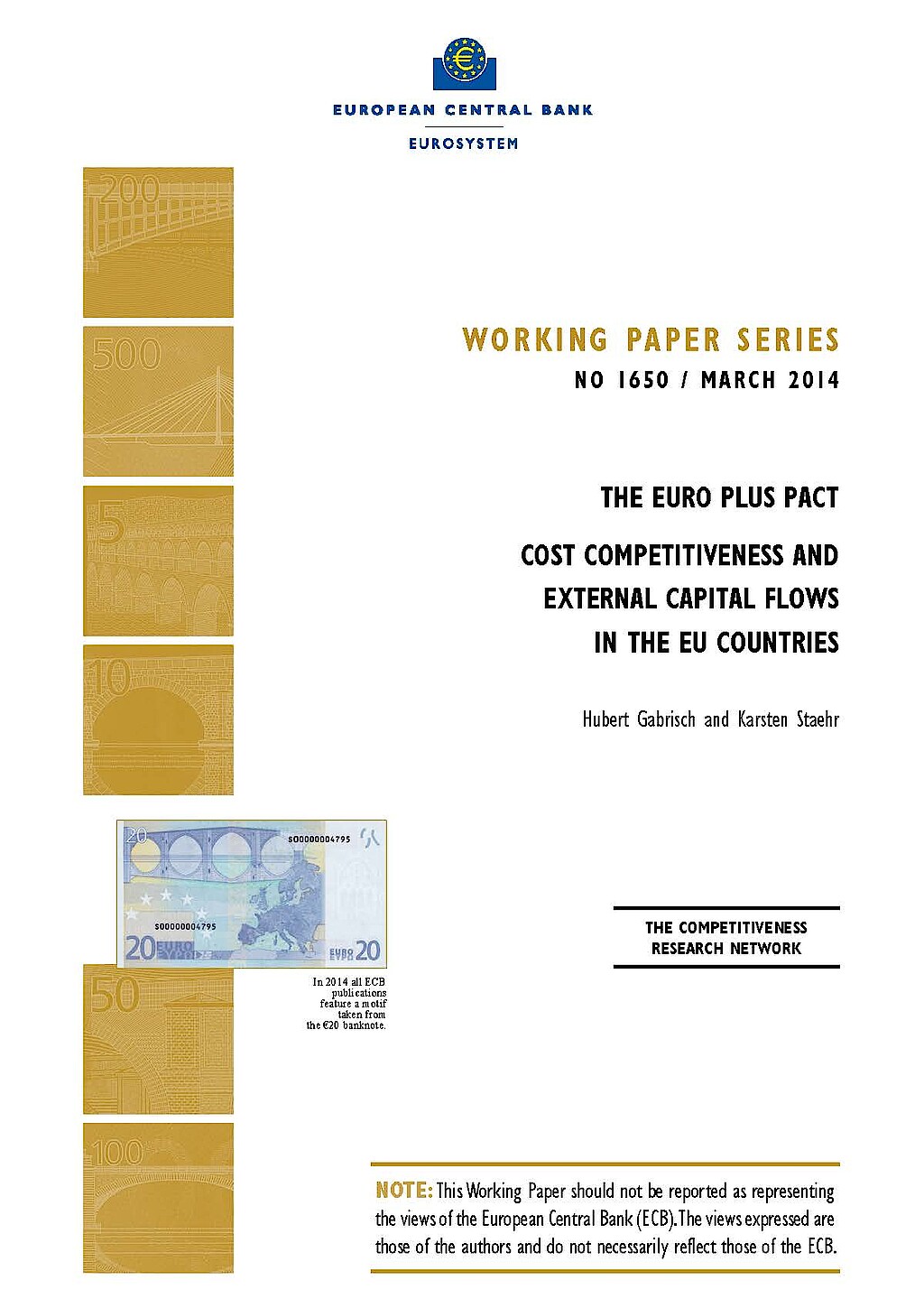
The Euro Plus Pact: Cost Competitiveness and External Capital Flows in the EU Countries
The Euro Plus Pact was approved by 23 EU countries in March 2011 and came into force shortly afterwards. The Pact stipulates a range of quantitative targets meant to strengthen cost competitiveness with the aim of preventing the accumulation of external financial imbalances. This paper uses Granger causality tests and vector autoregressive models to assess the short-term linkages between changes in the relative unit labour cost and changes in the current account balance. The sample consists of annual data for 27 EU countries for the period 1995-2012. The main finding is that changes in the current account balance precedes changes in relative unit labour costs, while there is no discernible effect in the opposite direction. The divergence in unit labour costs between the countries in Northern Europe and the countries in Southern and Eastern Europe may thus partly be the result of capital flows from the core of Europe to the periphery prior to the global financial crisis. The results also suggest that the measures in the Euro Plus Pact to restrain the growth of unit labour costs may not affect the current account balance in the short term.





